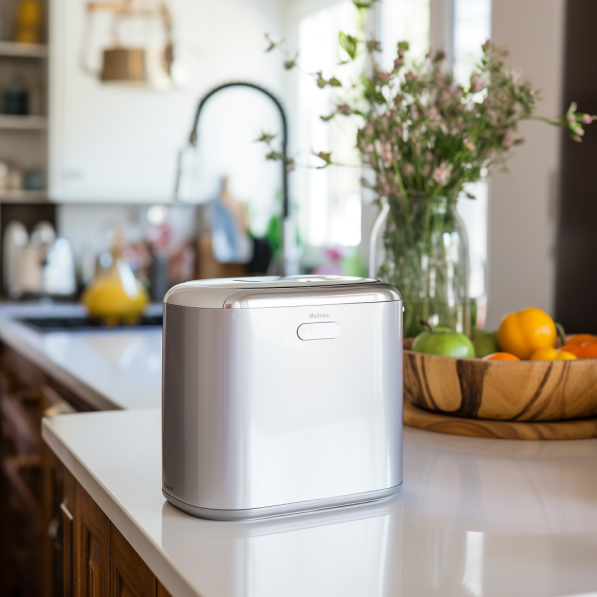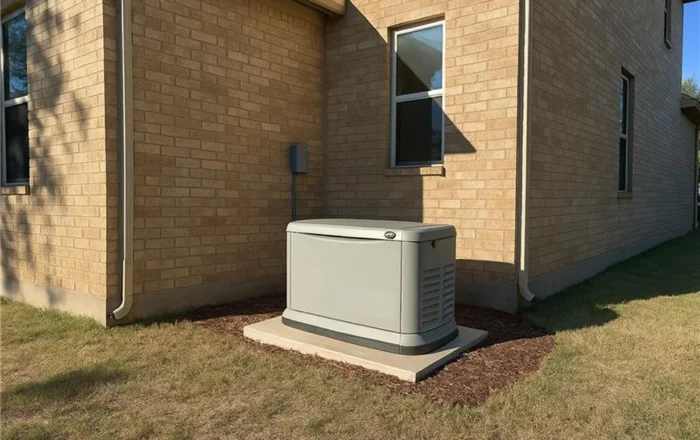How to Choose a Generator for Your Home
6 minute readHow to choose the right generator for your Texas home
A Composting Guide for Beginners
5 minute read • Last update January 2025

Composting is a practical and eco-friendly way to manage organic waste. However, only 27% of Americans have access to a composting service. So, for many, the only option is composting at home.
Looking to start your own compost pile or worm bin? In this handy guide to composting for beginners, we’ll discuss everything you need to know to get started.
Learning how to start composting at home requires a basic understanding of the science behind decomposition.
Essentially, finished compost is the result of microorganisms breaking down your kitchen and yard waste into a nutrient-rich natural mulch.
Decomposition occurs in stages, starting with simple sugars and soluble compounds. As the process progresses, complex molecules transform into humus, a dark, organic material that forms in soil when organic matter decays. Once fully decomposed, fresh compost can be used as fertilizer for vegetables, garden beds, window boxes, and more.
The composting process hinges on ensuring a proper balance of green and brown materials, moisture, and aeration.
But, how do you start a compost from scratch that balances those key factors effectively? Here’s a quick overview of the primary considerations.
The first step in learning how to start a compost bin is figuring out where to put it.
Whichever method you choose, pick an accessible spot with a good balance of sunlight and shade — preferably close to the kitchen for easy food waste disposal. Compost generates heat, so avoid positioning your container too close to fences or other structures. If you’re composting outside, you must also ensure adequate drainage to prevent waterlogging.

When people start researching how to compost at home, composition is often forgotten. Many assume it’s simply a case of throwing organic materials into a bucket and letting it do its thing. But there’s a bit more to it than that.
For optimal results, you’ll need a balanced mix of nitrogen-rich green materials and carbon-rich brown materials. To facilitate the right conditions for efficient decomposition, aim for a carbon-to-nitrogen (C:N) ratio of 3:1.
Adequate air circulation is an essential part of the decomposition process. To aid in the aeration process, try turning or mixing your decaying materials every few days using a trowel, pitchfork, or dedicated compost aerator.
Not only does this enhance microbial activity to speed up the process, but it also prevents the formation of anaerobic conditions that can lead to unpleasant odors — a particularly important consideration if you’re composting indoors.
Aside from ensuring adequate aeration, it helps to monitor moisture, temperature, and composition rate. Here’s a list of best practices:
Most organic kitchen and yard waste can go into your starting compost mixture, provided that plant waste is non-diseased and hasn’t been exposed to chemicals. The same goes for wood and paper, as treated products are a no-go. All vegetable scraps can go in your compost pile, but it pays to be cautious with citrus fruit peels due to acidity.
Some household waste is simply unsuitable for compost. For beginners, the “big three” to avoid are:
By following the steps above for how to get started, composting at home becomes a relatively straightforward process. Also known as cold composting, disposing of organic materials in a bin or pile is the most basic way to manage household waste sustainably.
But it’s by no means the only option. Let’s explore a couple of alternatives.
Ready to move on from composting for beginners? Vermicomposting, also known as worm composting, is the next level.
It involves utilizing a layer of red wrigglers to help break down organic matter. Worms naturally aerate the compost, eliminating the need for manual turning, and the mulch produced is excellent for fertilizing plants.
Worm bins work in the same way as a standard compost pile. However, they require much less space. You can start worm composting in containers as small as a 10-gallon tub, making it a popular option for those in small apartments with limited space and no yard.
You’ll need to ensure there’s a base layer of bedding material, but after that, you can throw in anything you’d put in a regular compost bin. Shredded newspaper and cardboard, coconut coir, or aged leaves are typically the best options for bedding.
If you’re not quite ready to take on the challenge of composting at home but still want to dispose of your household waste more responsibly, researching industrial composting services in your area is a great idea. These businesses are large-scale operations specially designed to efficiently handle community and commercial organic waste.
There are over 5,000 composting facilities in the U.S. Unfortunately, many only accept yard trimmings. However, Texans are lucky to have nine food waste facilities, offering residents more opportunities to reduce the volume of trash they produce and play a role in generating valuable resources for local businesses and industries.
Composting is a smart and sustainable way to revolutionize waste management while reaping the rewards for both your wallet and the environment. Let’s explore the primary advantages.
Composting minimizes personal waste by diverting organic materials from landfills. Research shows that up to 40% of all food produced in the US goes uneaten, and about 95% of discarded food ends up in landfills.
Decomposing organic matter in landfills leads to increased greenhouse gas emissions in the form of methane, adding to already widespread concerns about climate change. It’s estimated that food waste causes 58% of methane emissions from US landfills.
Composting reduces the need for store-bought fertilizers. The average-sized American lawn costs around $289 to fertilize, without considering the needs of vegetable and garden beds. Clearly, the potential for cost savings is significant.
Compost enhances soil health, providing myriad benefits for plant growth and overall soil structure. For example, finished compost improves nutrient and water retention, reduces erosion, and may even encourage healthier crop yields.
If you’re starting to compost, you’re likely also interested in saving resources and positively contributing to the environment in other areas. One of the best ways to make an impact is switching to a 100% renewable energy plan to power your home. Enter your zip code below to explore BKV Energy’s available green plan options.
Graham Lumley, Digital Marketing Manager at BKV Energy, leads digital and traditional marketing strategies, focusing on educating Texans about the state's deregulated energy market. With over 8 years of marketing experience, he creates content to help consumers understand and save on their energy bills, bringing a fresh and dynamic approach to the industry.

How to choose the right generator for your Texas home

Energy Saving Tips Home Improvement
Choosing the right energy-efficient door can help Texas homeowners reduce cooling costs and improve home comfort year-round.
Get $50 off your electric bill!
Use code BKVEJOINUS50
Enter your zip code to shop BKV Energy's affordable, fixed-rate Texas electricity plans. Use the promo code for $50 off your electric bill.